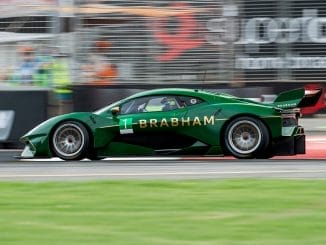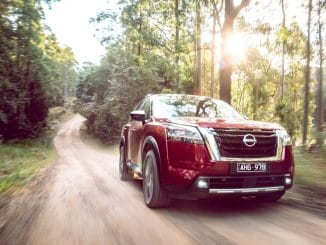Hello and welcome to Overdrive a program that plays with cars and transport. I’m David Brown
The times each story appears in the program are noted (mm:ss)
News (1:22)
- Nissan radio-controlled car is more than just play
- Electric cars – flexibility coming thick and fast
- Jaguar Land Rover re-using batteries program
- First mention of an arched bridge over Sydney Harbour
Feature Story (6:08)
- In our feature story we ask the question – Can a pink car be good for anything other than advertising? There is a clear case of “look at my car” but do people look with respect or disappointment. And does that matter
We speak to
- Advertising expert and motoring writer Paul Murrell
- Some of the Overdrive team
- And feedback from social media
Information piece (19:41)
Novated leases. A tax advantage that doesn’t require you to keep log books. So which cars are doing well in the market?
Motoring Minutes
- Toyota connectivity (18:32)
- Renault Koleos (28:07)
Nissan radio-controlled car is more than just play
Nissan may appear to be targeting the youth market with their radio-controlled toy car but they are making a point to a much wider audience.
It has four electric motors – one for each wheel and is operated externally with an arcade-like setup, complete with the accelerator pedal, steering wheel, and tilting racing seat.
It navigates a specially developed figure-eight course with different surfaces to show how the technology maintains the driving line and steerability.
Nissan has produced some videos with a lot of trendy people smiling at each other, images flashing across the screen at a frantic rate, and loud music.
Nonetheless, the technical development is very important especially, we believe, if it can be used in public transport vehicles such as buses. Part of the advantage is to be able to slow to a stop or take corners while keeping the vehicle level rather than pitching and rolling
Electric cars – flexibility coming thick and fast
 Nissan is showcasing its latest electric platform and like other manufacturers they emphasise its flexibility – the platform will serve as the basis for 15 electric models by 2030.
Nissan is showcasing its latest electric platform and like other manufacturers they emphasise its flexibility – the platform will serve as the basis for 15 electric models by 2030.
Nissan says that the architecture gives the opportunity to explore the concept Ma – a Nissan design philosophy focused on mastering the potential of empty space. Its “transforming cockpits into lounge-like spaces, they say, while accommodating multiple powertrain options”.
This has been a positive feature in vehicles such as the Hyundai’s Ioniq 5 and Kia’s EV6.
Another aspect of electric vehicles is the speed with which they are being developed.
General Motors’ Electric Hummer took only two years to develop when the traditional time for a vehicle has been four years or more.
While the need for an electric Hummer for public roads is questionable the fact that innovations can be developed quicky is a message that policy makers need to embrace.
Jaguar Land Rover gives second life to I-PACE batteries
 Jaguar Land Rover has partnered with Pramac, a global leader in the energy sector, to develop a portable zero-emission energy storage unit powered by second-life Jaguar I-PACE batteries.
Jaguar Land Rover has partnered with Pramac, a global leader in the energy sector, to develop a portable zero-emission energy storage unit powered by second-life Jaguar I-PACE batteries.
Called the Off Grid Battery Energy Storage System (ESS), Pramac’s technology – which features lithium-ion cells from Jaguar I-PACE batteries taken from prototype and engineering test vehicles in order to supply zero-emission power where access to the mains supply is limited or unavailable.
They can be safely deployed in multiple low-energy situations once battery health falls below the stringent requirements of an electric vehicle. Second-life battery supply for stationary applications, like renewable energy storage, could exceed 200 gigawatt-hours per year by 2030, creating a global value estimated to be over $30 billion*.
The unit helped Jaguar Racing prepare for the Formula E World Championship during testing in the UK and Spain, where it was used to run the team’s diagnostic equipment analysing the race cars’ track performance, and to supply auxiliary power to the Jaguar pit garage.
The first mention of a Sydney Harbour Bridge
 Amidst all the celebrations of the 90th anniversary of the Sydney Harbour Bridge, it is interesting to ponder when a grand arch over the harbor was first envisaged.
Amidst all the celebrations of the 90th anniversary of the Sydney Harbour Bridge, it is interesting to ponder when a grand arch over the harbor was first envisaged.
Mention of an arch across the harbour appeared in a poem by Erasmus Darwin in 1789 barely one year after the first European settlement.
Erasmus was the grandfather of Charles Darwin and had a close association to the Wedgwood family famous for pottery (Charles Darwin would later married a Wedgwood). Erasmus was a poet, physician and natural philosopher and some suggest a bit of a rascal.
To commemorate the European settlement some Sydney clay was sent back to England for the Wedgwood organisation to make some medallions. Without having been to Sydney Erasmus wrote a poem “Visit of Hope to Sydney-Cove, Near Botany-Bay”.
Some of the lines from the poem are
“Shall bright canals, and solid roads expand. —
“There the proud arch, Colossus-like, bestride
“Yon glittering streams, and bound the chasing tide;
Sydney Harbour is more than a glittering stream and the Harbour Bridge is probably more than he envisaged but he caught the spirit of the city and the impact of the bridge.
You can find more information at Driven Media or previous programs are available as podcasts on iTunes or Spotify. OR our Facebook site OverdriveCity
Originally broadcast 19 March 2022 across Community Broadcasting Association of Australia (CBAA) and Torque Radio affiliated commercial radio channels and has a weekly audience of over 450,000.





